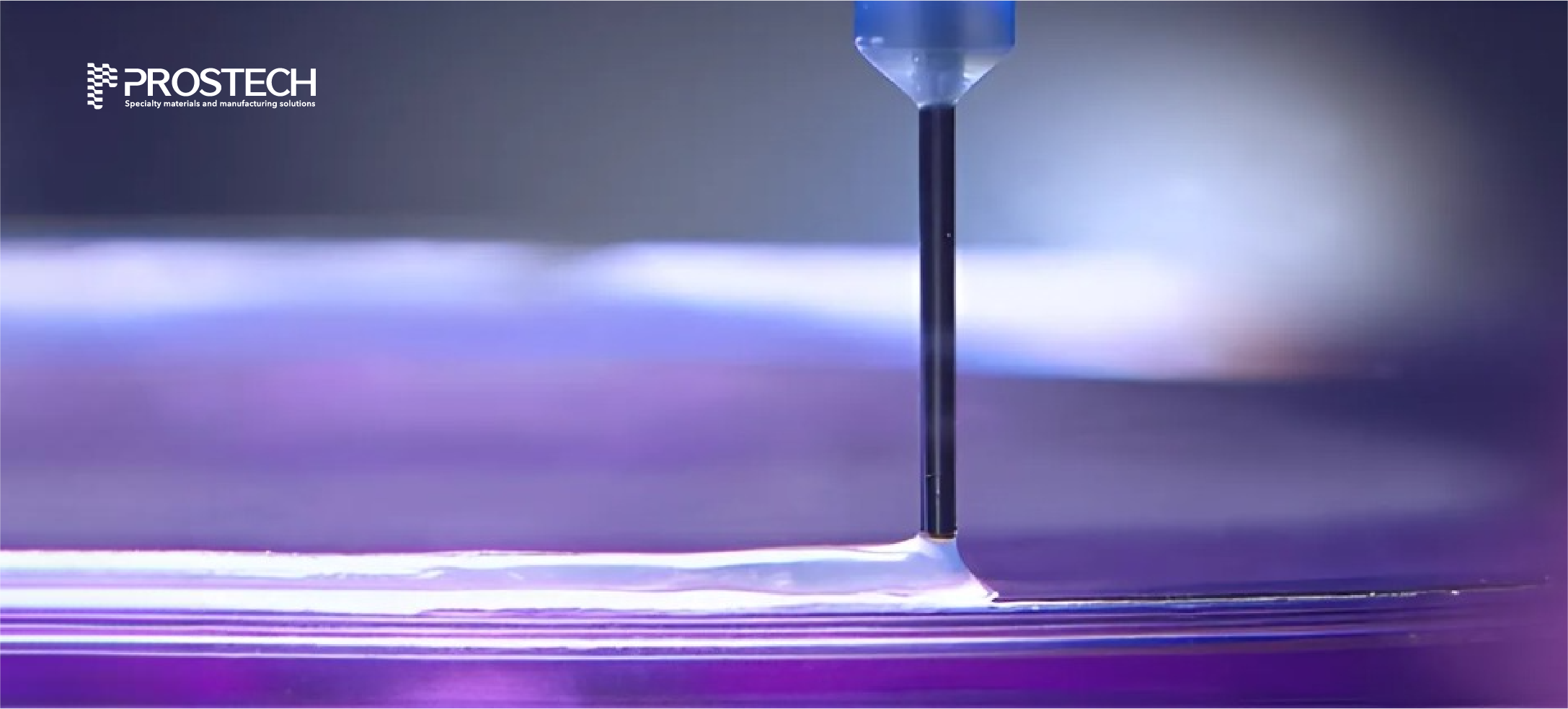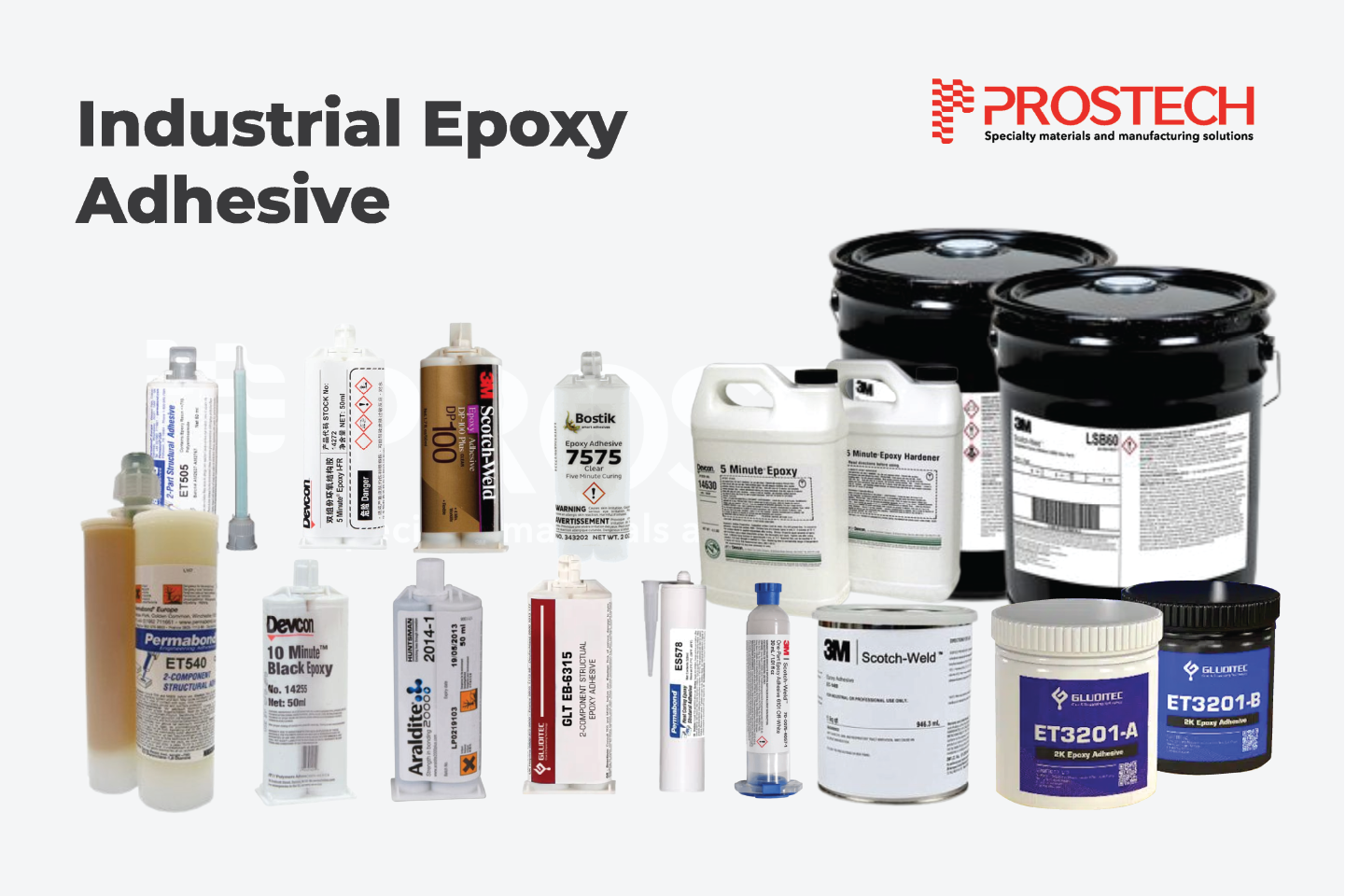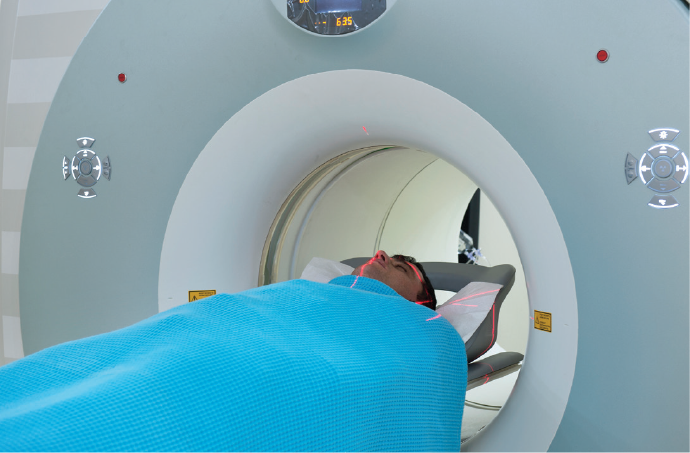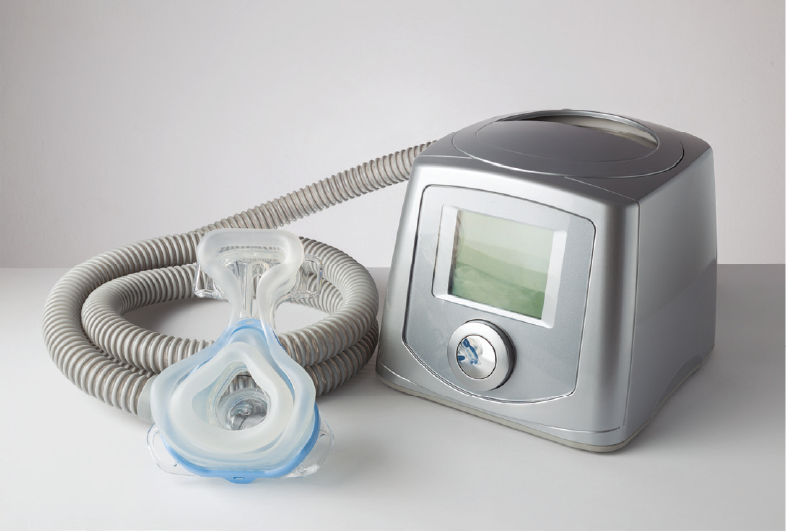In the process of manufacturing and assembling, one of the biggest challenges that businesses face is finding an effective, fast and durable adhesive. Traditional adhesives often take a long time to cure and do not ensure high durability, leading to reduced work efficiency and increased production costs.
Fast-drying UV adhesives originated in the 1960s and became popular in the late 1980s. At that time, fast-drying adhesive technology by light attracted the attention of many industries thanks to its special drying process when using ultraviolet (UV) light to create a chemical reaction. UV adhesives are now very popular in the market and are widely used in many different industries. This article will provide an overview of UV adhesives, from their structure, operating mechanism to practical applications and the benefits they bring.
1. What is UV Adhesive?
UV curing adhesive or often called light curing, photo-curing adhesives, are adhesives that cure when illuminated with light within a specific wavelength, usually of UV-A or “blue-light” approximately 365 nm to 405 nm. UV adhesive is named according to the drying mechanism instead of the composition of the glue.

2. Basic composition of UV adhesive
UV glue is composed of three main components: monomers, oligomers and photoinitiators:
Monomer and oligomer are the molecular chains that will form the structure of the adhesive after it has cured. The chemical structure of the monomers and oligomers determines many of the adhesive’s properties, such as mechanical properties, chemical resistance, and weather resistance. For example, there are significant differences in these properties between aliphatic and aromatic structures, and between hydrocarbon chains, polyethers, polyesters, polyurethanes, fluorocarbons, or siloxanes.
Photoinitiator is a component that initiates the polymerization reaction when it absorbs energy from UV light. This process occurs when the photoinitiator decomposing to produce free radicals, which initiate the polymerization of monomers and oligomers. A photoinitiator is a molecule with the following properties:
- High light sensitivity in the wavelength range of the UV source.
- Good solubility and reactivity in the monomer/oligomer system.
- High stability during storage and shelf life of the adhesive.
Modification of the chemical structure of monomers and oligomers is important to produce adhesive materials with desired properties. In the polymerization process, the most common monomers and oligomers are acrylics and methacrylates, due to their properties and commercial availability. Pre-polymers such as epoxides, polyethers, polyesters, and polyurethanes are often functionalized with acrylic or methacrylic compounds to enhance their UV curing ability.
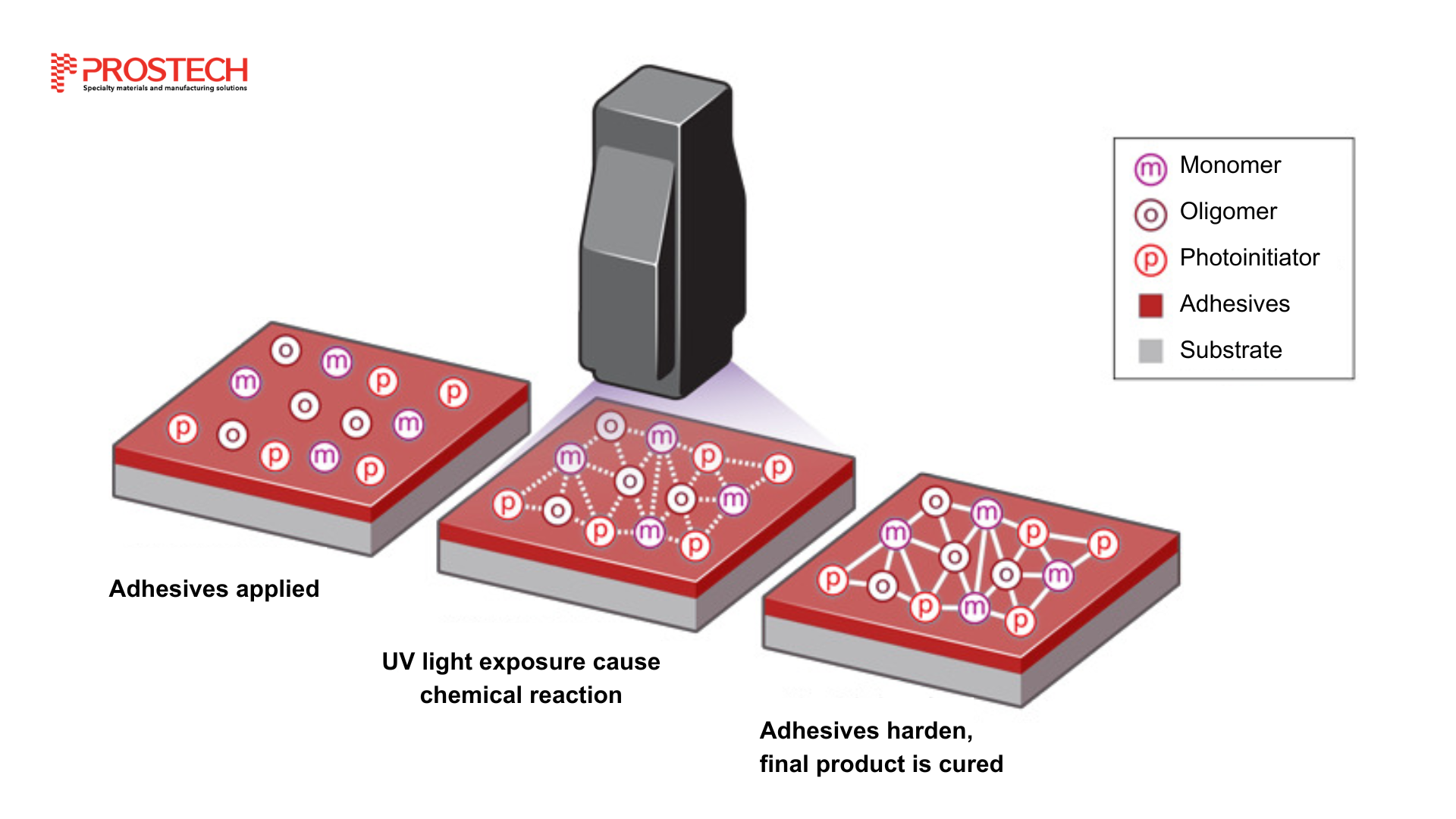
Functionalization of other pre-polymers such as epoxides, polyethers, polyesters, polyurethanes with acrylic or methacrylic radicals can have certain advantages:
-
Product Diversity: Functionalization of different pre-polymers enables the creation of a range of monomer or oligomer products with diverse properties, meeting a wide range of requirements and applications.
-
Property Improvement: Functionalization can improve the properties of monomers and oligomers such as adhesion, heat resistance, flexibility and chemical resistance, increasing the performance and durability of the final product.
-
Meeting Specific Needs: Particular requirements from a particular market or application may not be fully met by the available acrylic monomers and oligomers. Functionalization of other pre-polymers enables the creation of products that better suit these special requirements.
In summary, by adjusting and functionalizing the components of UV adhesives including monomers, oligomers, and photoinitiators, adhesive manufacturers can create adhesives with desired properties for a variety of applications.
To use UV glue effectively, it is necessary to understand the curing mechanism of this type of glue in order to choose the appropriate glue curing method and optimize the production process. With many years of experience in the field of UV glue, Prostech is proud to provide customers with professional advice on the type of glue and process suitable for each specific application. Please contact us for more information:
Read more related articles:
Curing Mechanism of UV Adhesive
UV Adhesive – More than the name implies
3. Characteristics of UV adhesive

UV adhesives offer many outstanding benefits for industrial and manufacturing applications. Here are some of the outstanding benefits of UV adhesives:
- Fast curing speed: The curing speed can be easily customized to suit production requirements – for example, it is possible to increase the drying speed as well as increase productivity when adding a curing lamp to the production line.
- Outstanding adhesion: UV adhesive has strong adhesion on a variety of materials, providing durable joints over time.
- Flexible and easy to adjust: The glue only dries quickly when exposed to UV light. This allows users to easily adjust parts and joints before fully fixing, ensuring high precision.
- Safe: The glue does not contain solvents, is non-flammable, ensuring safety during use.
- Easy to use: UV glue is a one-component glue, does not require mixing, so it can be used easily.
- Cost savings: UV curing lamp systems consume less electricity than heat curing ovens, helping us save significantly on operating costs.
- Space saving: UV curing systems are usually quite small, suitable for any working space.
- High aesthetics: UV glue is often transparent, has a beautiful adhesive surface, increasing the aesthetics of the product.
UV adhesives have many outstanding advantages but also have some limitations such as the requirement of a curing system, compatibility with the surface, etc. UV adhesives are usually one-component adhesives that allow for easy handling although for some applications an activator or primer is required to improve adhesion and/or curing, especially in locations where the adhesive is hidden from the UV light source. For the polymerization reaction to occur, the adhesive needs to be exposed to UV light so at least one surface to be bonded must be transparent or opaque to allow UV light to pass through. However, recent developments have investigated “dual-cure” products that allow UV adhesives to cure by two mechanisms such as UV-heat, UV-humidity, UV-anaerobic, thereby helping the adhesive in locations hidden from the light to dry completely. Prostech provides solutions to help overcome these limitations and optimize the process such as products and UV curing systems suitable for different applications across different manufacturing industries.
4. When should UV adhesive be used?
UV adhesives should be used in the following cases:
- Requires fast curing: UV adhesives respond well to processes that require high sensitivity, with the ability to cure in just a few seconds when exposed to UV light. This helps speed up the production process and reduce waiting time.
- Optimize the production process: With its “cure-on-demand” properties, UV adhesives are preferred in the assembly of large parts and production processes that require fast processing speeds, thereby reducing production costs and increasing efficiency.
- Applications in industries requiring high precision: Because of the ability to precisely control the curing time and position, UV adhesives are suitable for applications requiring precision such as electronics, medical, and packaging industries.
- Energy saving and environmental protection: UV adhesives do not contain solvents and require low energy, helping to reduce toxic emissions and protect the environment.
5. Applications of UV adhesive
Unless the light is an electron beam, photochemical processes proceed in a gradient, that is, the light effect is strongest at the surface and gradually decreases as it penetrates the material. The reason for this problem is the competition between light absorption and light penetration during the reaction. Therefore, UV adhesives are mainly used in areas that require thin polymer layers such as coatings, inks and adhesives.
Applications of UV glue in the electronics industry
In the electronics industry, UV adhesives are widely used to assemble and protect electronic components such as chips, printed circuit boards, and modules. The rapid curing properties of UV adhesives help speed up the manufacturing process and ensure the stability of devices in industrial environments. In addition, UV adhesives are also used for conformal coating of electronic circuit boards and as an ingredient in electronic printing inks, helping to improve the performance and flexibility of electronic products.

UV Conformal Coating Solutions
Applications of UV Adhesive in Medical Industry
UV adhesive is a technology commonly used in the medical industry due to their ability to cure quickly under UV light. Main applications include marking, decorating and bonding medical devices, from surgical machines to medical instruments, as well as coating them to protect them from the outside environment.
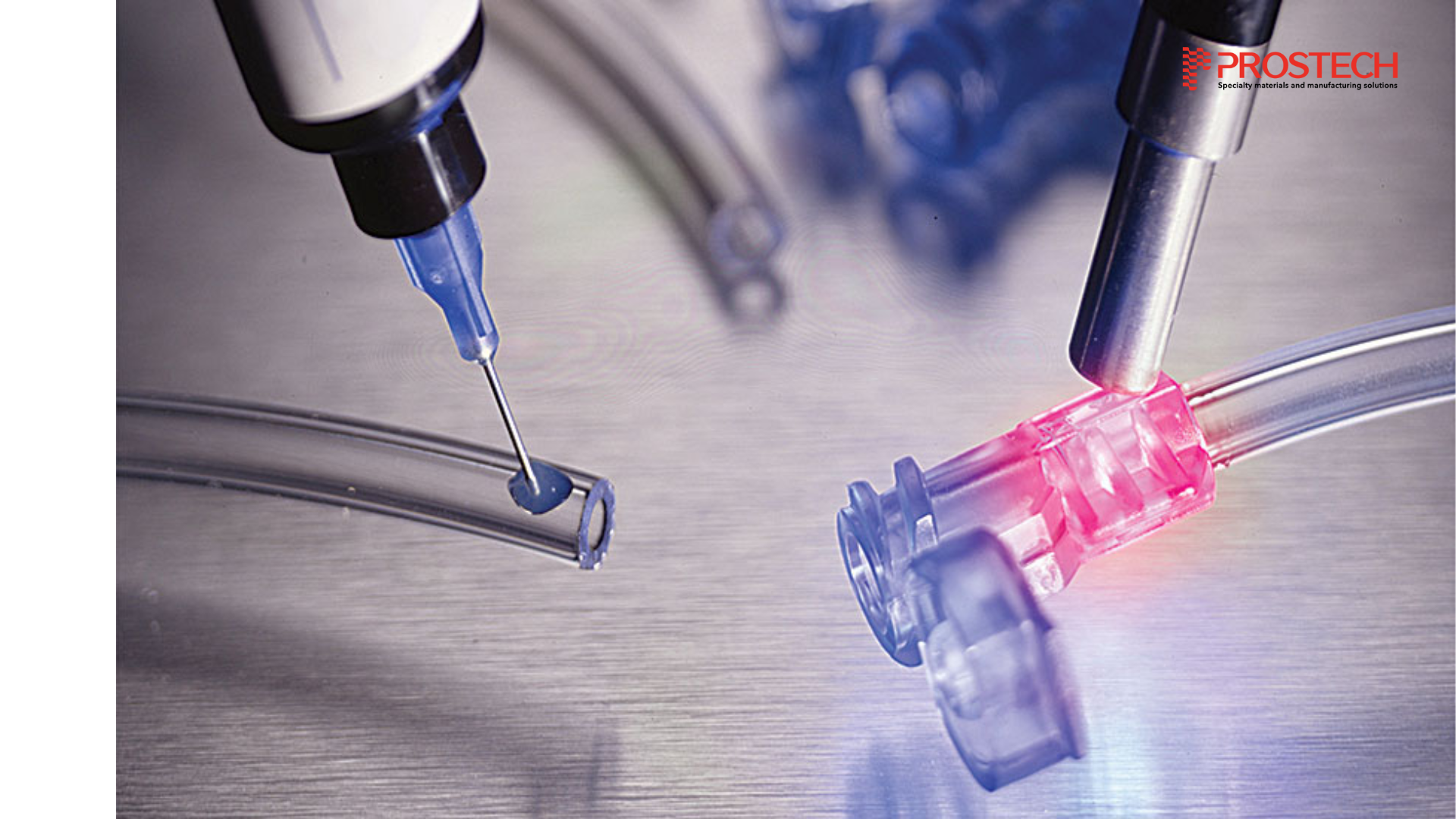
Read more related articles::
7 Reasons why Light-Curable Adhesives are Ideal for Medical Device Assembly
Catheter Assembly: Choosing the Right Medical Adhesive Grade
Applications of UV adhesive in the Automotive Industry
In the automotive industry, UV adhesives help bond plastic and metal parts, creating strong bonds that can withstand harsh environmental conditions. UV adhesives are also used to seal headlights and taillights, ensuring no water leaks.
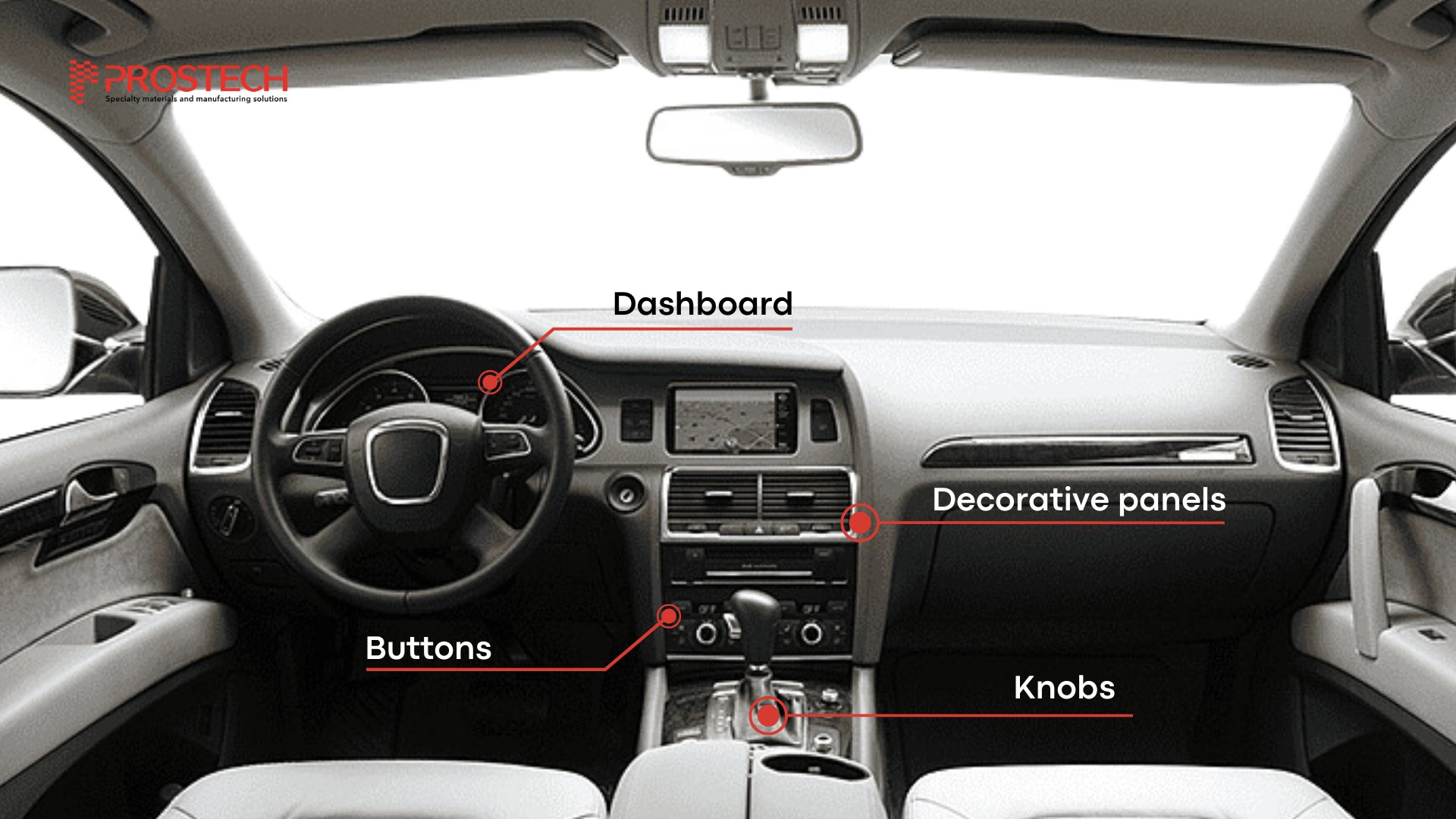
Application of UV glue in the production of home appliances
In the production of washing machines and microwave ovens, UV adhesives are used to assemble transparent and ultra-thin parts such as control panels and glass doors of microwave ovens, as well as small electronic circuits in washing machines. This helps protect and keep transparent surfaces and sensitive parts to ensure accuracy and durability during use.
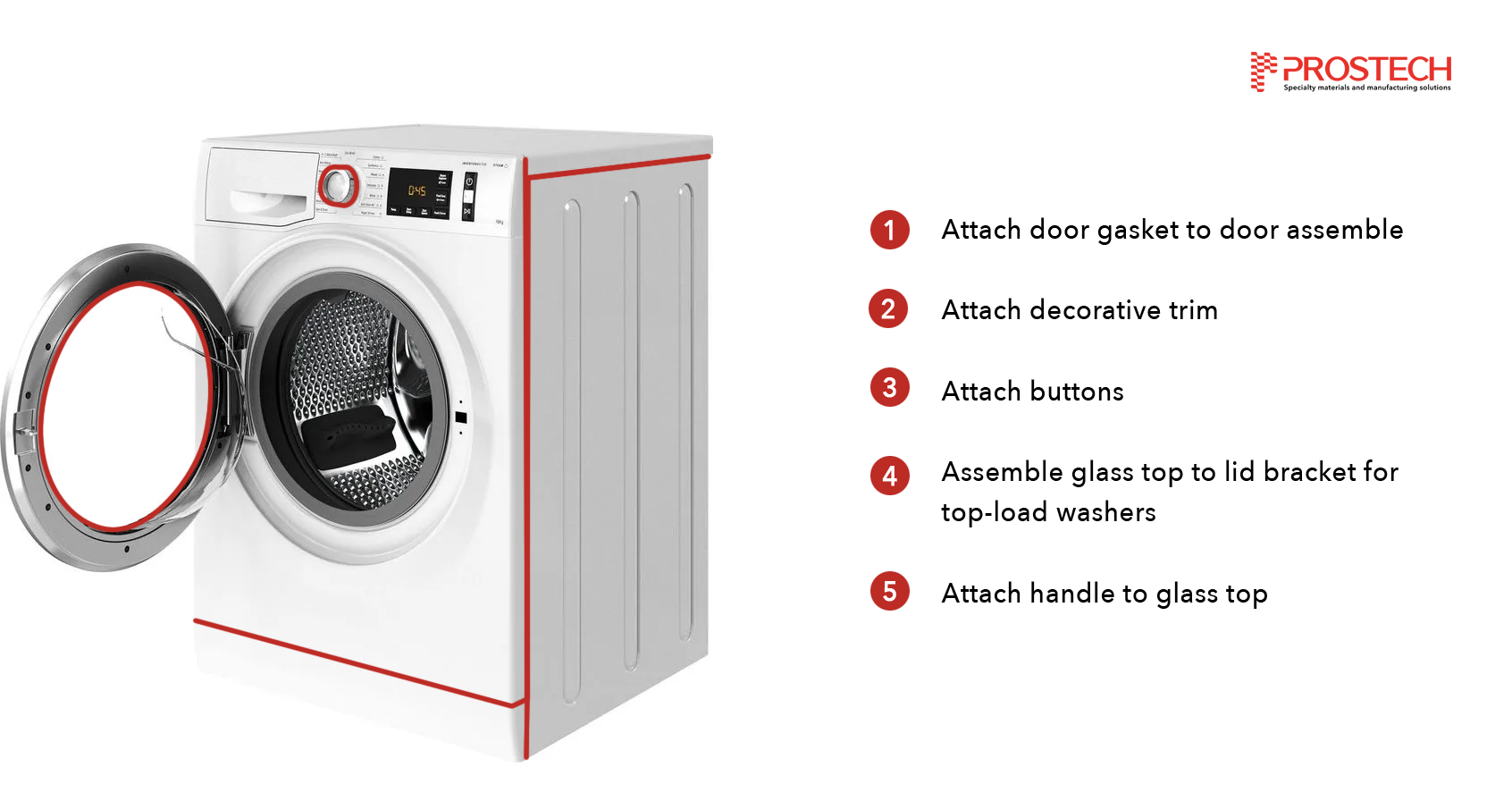
Applications of UV Adhesive in the Aerospace Engineering
UV adhesives have many applications in aerospace engineering, including bonding transparent materials such as window frames and canopies on aircraft to ensure aesthetics and uniformity. They are also used to seal and gasket critical components such as fluid systems and cabin pressurization, ensuring the efficiency and safety of aircraft systems. UV adhesives also play an important role in bonding composite materials, helping to create lightweight and durable components in the manufacture of modern aircraft.
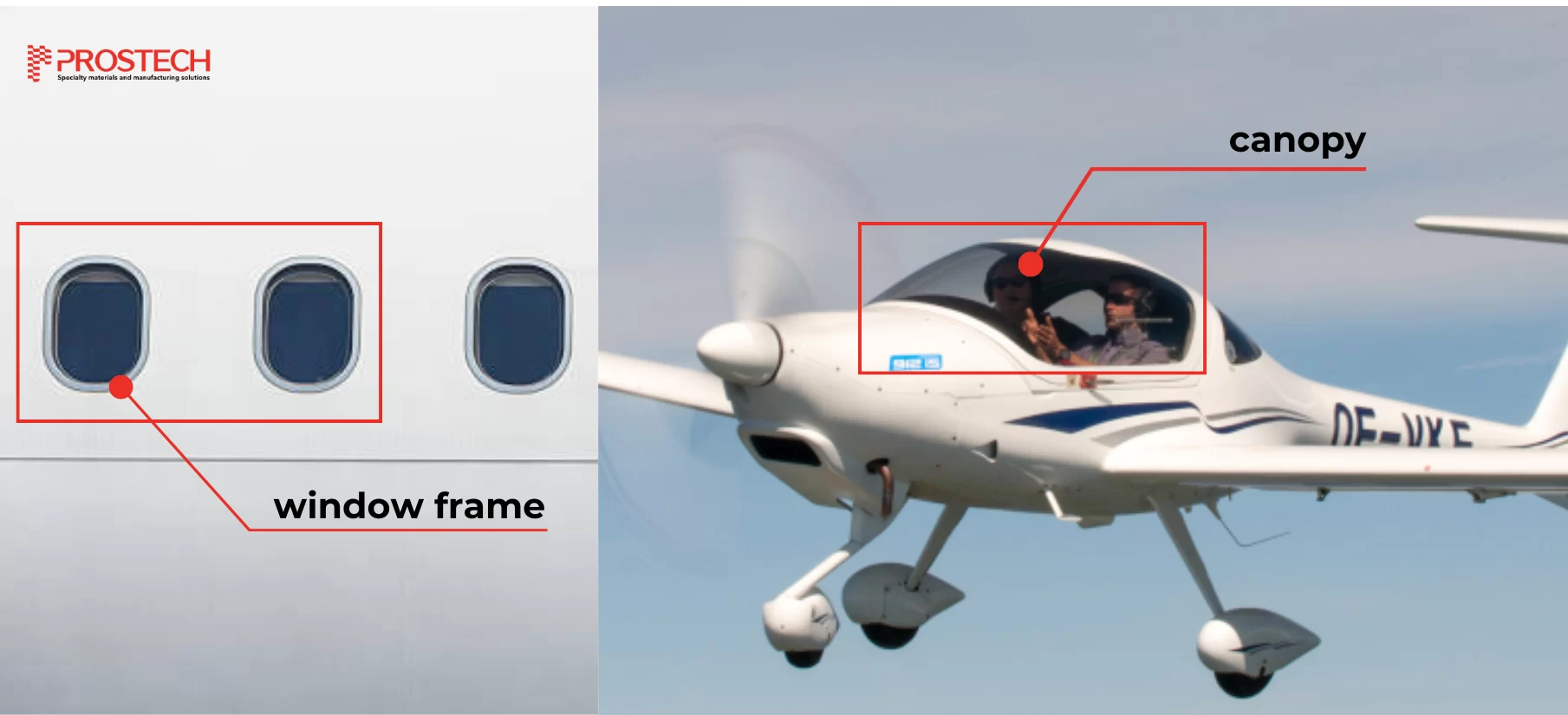
6. Prostech UV Adhesive product range
Prostech is an authorized distributor of genuine UV glue from big brands such as Permabond, Loctile, Gluditec, etc. With many years of experience, Prostech has supplied products to thousands of large and small manufacturers nationwide. Prostech’s product range includes:
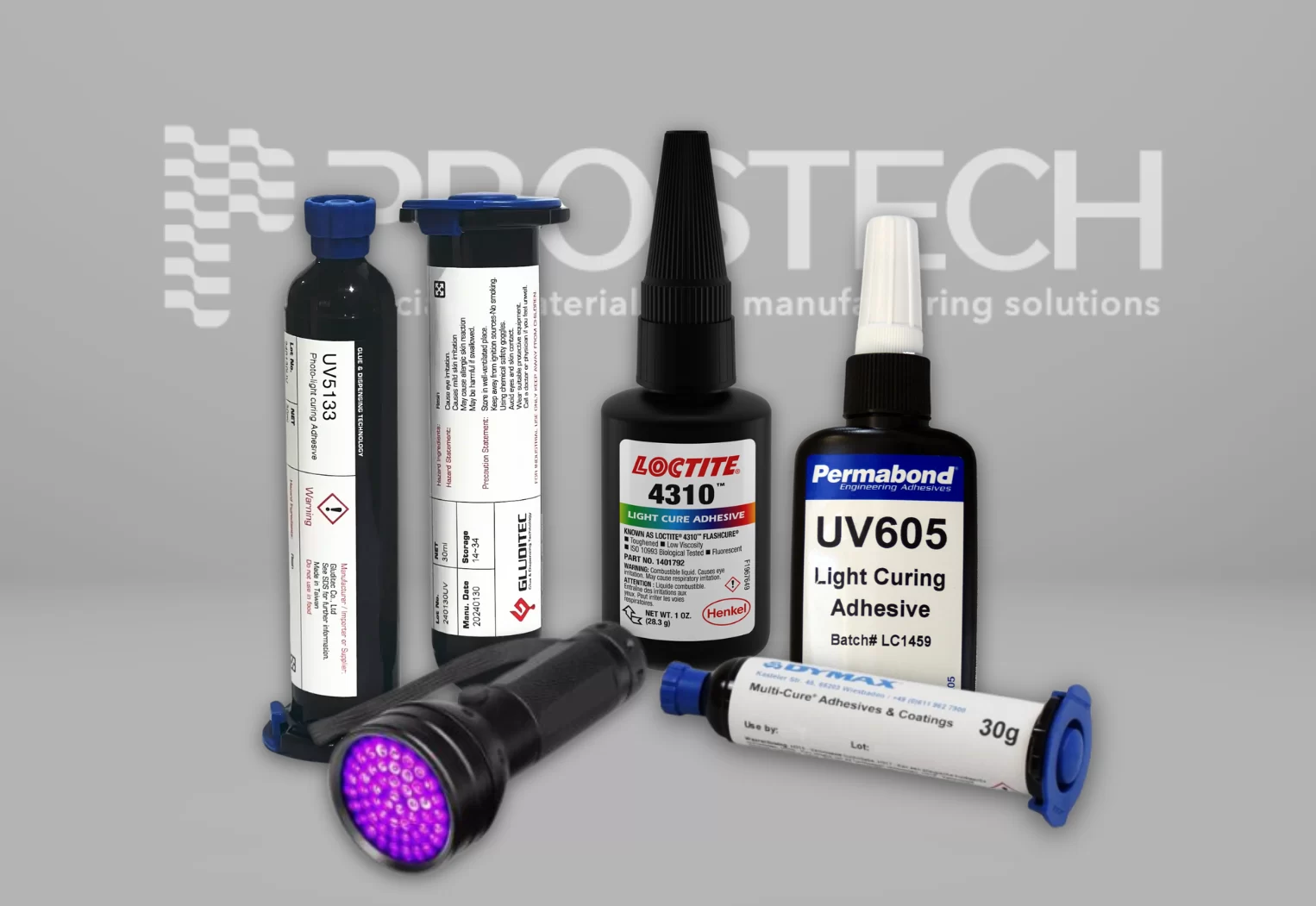
To optimize production efficiency and improve product quality, Prostech’s UV adhesive solutions are committed to providing customers with superior experiences with our products and services. For free consultation on the type of UV adhesive suitable for your application, please contact us directly!




